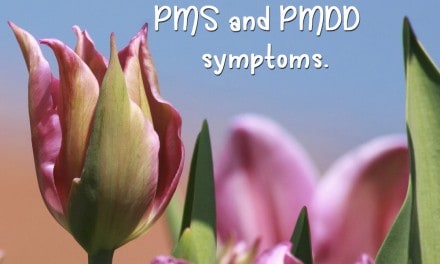Premenstrual Dysphoric Disorder or PMDD is commonly referred to as severe PMS or Premenstrual Syndrome. PMS and PMDD may have the same emotional, mental and physical symptoms but PMDD displays more severe, intense manifestations of these symptoms.
PMDD symptoms are often so debilitating that they can cause a significant disruption in a woman’s ability to work and function normally. This is the unfortunate reason why many women who suffer from PMDD also sometimes suffer from disrupted and damaged relationships with their friends and loved ones.
What Are The Symptoms of PMDD?
The most intense emotional, psychological and physical symptoms of PMDD are usually experienced a few days preceding the actual menstruation period.
Common symptoms may include headaches, joint pain, bloating, breast tenderness, mood swings and food cravings.
Women who have PMDD may also have difficulty sleeping, thereby increasing their likelihood of experiencing fatigue. This fatigue can exacerbate their anxiety and depression, and even contribute to triggering panic attacks.
Irritability, extreme mood swings and lack of focus are also some of the hallmarks of PMDD. However, this is nowhere near the full list of PMDD symptoms, just some of the more commonly experienced ones.
The Link between PMDD and Cellular Disorder
Experts from the National Institute of Health discovered that women who have been diagnosed with PMDD are more sensitive to the effects of estrogen and progesterone hormones. According to the researchers, this sensitivity is caused by a certain molecular mechanism in their genes.
This means that women with PMDD possess intrinsic difference in their body’s molecular apparatus, and this explains why some women’s bodies respond in a different manner to their own sex hormones than others do.
Experts now have solid evidence that shows the abnormal signaling of cells among women who have PMDD. In intensive studies, experts found that cutting off progesterone and estrogen can help put an end to their PMDD symptoms.
In their studies, when experts re-introduced the sex hormones the symptoms of PMDD re-emerged. As with so many conditions affecting human health and well-being, it seems that a specific genetic makeup predisposes a segment of the population to an exacerbated response to a natural hormonal occurrence.
Experts hope that the findings of this study will shed some light on why women show these debilitating symptoms and lead to further treatments. They also hope that people will come to understand that sufferers can’t just ‘snap out of it’ because the condition is not imagined or self-induced.
Treatment is Available
Just as the condition is very real, so too are treatment possibilities. It is therefore hoped that more women realize that they don’t have to live with PMDD and its painful and disruptive symptoms. You don’t have to let your hormones rule your life.
There are several forms of treatment available. If you are a woman who suffers from PMDD, or if you suspect your friend or family member does, understand that you, or they, should consult a health care professional for advice.
Effective treatment will vary from person to person, and may not have to involve hormone management. Natural, non-invasive therapies which have proven successful for other painful conditions have helped many PMDD and PMS sufferers.
Besides medication, some treatments that are seen to help some women include cognitive behavioral therapy, acupuncture, aromatherapy, exercise, various stress-relieving activities, and an assortment of natural vitamin and herbal supplements.
PMDD can interfere with a person’s quality of life. PMDD is treatable through lifestyle changes, natural remedies, or medications. Some people may need a combination of options. Once a person has found the right treatment or combination of treatments, they will probably enjoy an improvement in symptoms.





Recent Comments